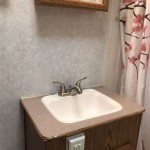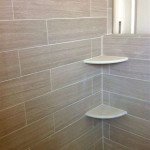Bathroom Sink Valve Height: Essential Aspects to Consider
When designing or remodeling a bathroom, the height of the sink valve is a crucial element to consider for both functionality and aesthetics. The valve height plays a significant role in ease of use, comfort, and overall bathroom design. Understanding the essential aspects of bathroom sink valve height will ensure the creation of a comfortable and aesthetically pleasing bathroom space.
In the context of this article, "bathroom sink valve height" is a noun phrase that refers to the vertical distance between the countertop and the center of the valve handle. This measurement is essential in determining the ergonomics and accessibility of the sink.
Comfort and Accessibility
Valve height directly impacts comfort and accessibility. A valve that is too high can be difficult to reach, especially for children or individuals with limited mobility. Conversely, a valve that is too low can be uncomfortable to use, requiring excessive bending or crouching. The ideal valve height provides a comfortable reach while maintaining proper posture.
Ergonomics
Ergonomics plays a vital role in bathroom design. The valve height should promote proper hand and wrist positions during use. A valve placed too high or too low can lead to strain or discomfort over time. The correct height allows for effortless operation of the valve without straining the hands or wrists.
Aesthetic Appeal
Valve height also contributes to the overall aesthetic appeal of the bathroom. A valve that is visually balanced with the sink and surrounding fixtures creates a cohesive and aesthetically pleasing design. The height of the valve should complement the size and style of the sink, ensuring a harmonious appearance.
Standard Valve Heights
Industry standards provide general guidelines for valve height. Generally, the center of the valve handle should be positioned approximately 4 inches above the countertop surface. However, these guidelines may vary slightly depending on the specific sink design and user preferences.
Customization and Adjustments
While industry standards provide a starting point, it is essential to consider individual needs and preferences when determining the valve height. Some sinks may require adjustments to ensure optimal comfort and accessibility. Adjustable valves offer the flexibility to modify the height as desired, providing a personalized solution.
Conclusion
The height of a bathroom sink valve is an essential aspect to consider when designing or remodeling a bathroom. It directly impacts comfort, accessibility, ergonomics, and aesthetics. By understanding the importance of these factors and following industry guidelines while considering individual preferences, designers and homeowners can create functional and aesthetically pleasing bathroom spaces.

Standard Height Of Bathroom Fittings Fantasticeng

Standard Height Of Plumbing Fixtures Detailed Information Civil Site

Wall Mounted Sensor Faucet Mount Touchless Kege

Standard Height Of Bathroom Fittings

Standard Shower Valve Height Expert Guides With Picture M2b

Purple Vessel Sink Vintage Porcelain Flower Shape Pattern Rectangular Glass Sinks Bathroom Faucet

Standard Height Of Plumbing Fixtures Detailed Information Civil Site

Shower Faucet Height Standard Google Search Controls Plumbing Layout Master Bath Renovation

Ada Compliant School Stainless Steel Sinks

What Is The Bathroom Sink Drain Rough In Height Guide







